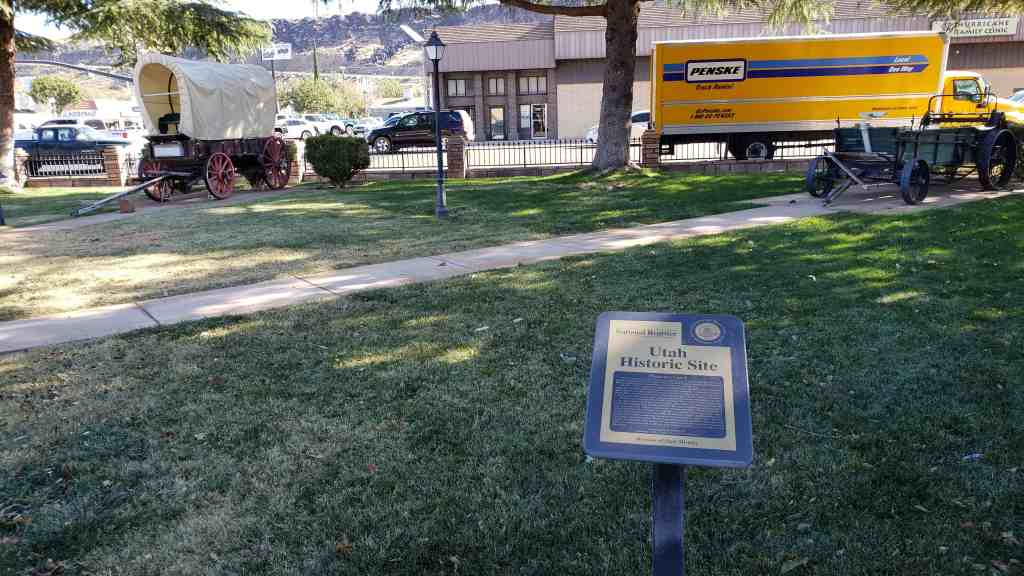
Hurricane Canal
The construction of the Hurricane Canal is one of Utah’s proudest stories of pioneer determination. This canal, built completely by hand, opened the Hurricane Bench to farming and the establishment of the town of Hurricane.
In 1893 two local men, James Jepsen and John Steele, decided to try to build the canal, even though earlier reports had determined it impossible. Company shares were sold to help finance the project. This stock was issued in blocks, not to exceed twenty shares. Each share was one acre of land with water rights. Nearly 100 men subscribed to stock in the Hurricane Canal Company; many of the shares were paid for in labor.
Work on the canal was difficult and dangerous. The canal’s 7-1/2 mile length clings to the sheer walls of the Virgin River Canyon, then follows the Hurricane Fault and circles the farmlands of the Hurricane Bench. The canal is 8 feet wide and 4 feet deep, laid out on a 12-foot shelf of conglomerate and limestone rock. Twelve tunnels had to be blasted through solid rock and six flumes on wooden trestles were built to span ravines. Ten cisterns were built on the hillside below the canal to hold drinking water. Construction could be done only during the winter months in order to leave the men free to take care of their farms. Work progressed slowly and landslides often wiped out months of hard labor. After eleven years of tenacious effort, the canal was finished in 1904, providing water for 2,000 acres of farmland and the new community of Hurricane.
Marker placed in 1992 by the Hurricane Valley Chapter, Sons of Utah Pioneers
Division of State History

This historic marker is located in Hurricane Valley Pioneer Heritage Park in Hurricane, Utah.
